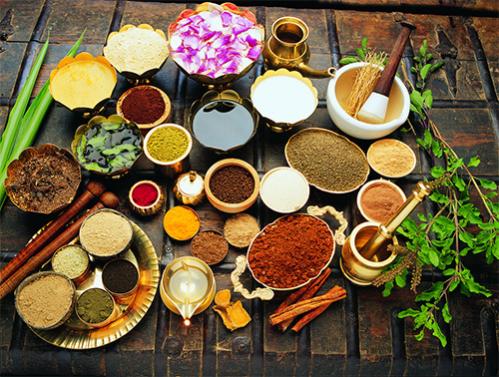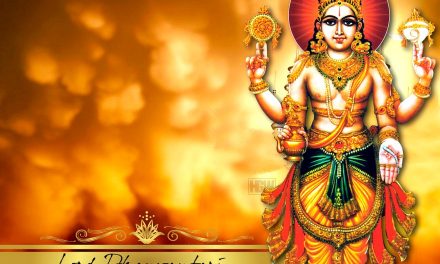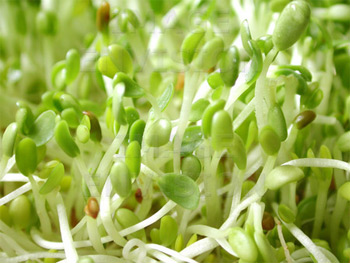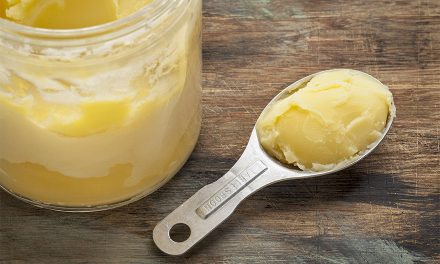The recent revival of interest in Ayurvedic healing suggests the emergence of new insights and perspectives on health and healing. Ayurveda may be new in the Western world, but scholars maintain that it is the oldest known medical science, over 3,000 years old. Ayurveda literally means “the science of life.”
It involves the whole scope of healing specialties, which can be summarized in the following eight branches:
1) General medicine (kaya chikitsa)
2) Surgery (salya chikitsa)
3) Ear, nose and throat (salakya tantra)
4) Pediatrics (kaumara bhritya)
5) Toxicology (agadatantra)
&) Psychiatry (bhuta vidya)
7) Geriatics (rasayana)
8) Aphrodisiacs (vajikarana)
[wp_ad_camp_1]
The recent revival of interest in Ayurvedic healing suggests the emergence of new insights and perspectives on health and healing. Ayurveda may be new in the Western world, but scholars maintain that it is the oldest known medical science, over 3,000 years old. Ayurveda literally means “the science of life.”
It involves the whole scope of healing specialties, which can be summarized in the following eight branches:
1) General medicine (kaya chikitsa)
2) Surgery (salya chikitsa)
3) Ear, nose and throat (salakya tantra)
4) Pediatrics (kaumara bhritya)
5) Toxicology (agadatantra)
&) Psychiatry (bhuta vidya)
7) Geriatics (rasayana)
8) Aphrodisiacs (vajikarana)
Innumerable modalities are employed by Ayurvedic physicians according to the patient’s constitution and imbalances. They include mineral and herbal preparations (oils, powders, decoctions, infusions, medicated ghees and medicated wines).
Doctors recommend a minimum retreat of twenty- eight days in an Ayurvedic clinic (shala) to gain the full benefit offered by Ayurvedic treatments. Effective treatment is available for acute and chronic conditions of mental or physical origin.
The holistic approach taken by Ayurvedic physicians ensures that all aspects of the patient’s needs are considered. The patients I interviewed during my research visits to Ayurvedic retreats in India felt genuine long-term relief from their ailments. The patients traveled from all over the world and distant parts of India to receive treatment. Many scheduled annual retreats in order to maintain and increase the sense of well-being that Ayurvedic treatment had given them in the past.
TREATMENTS
Every patient will get a treatment plan, diet and exercise regime tailored to his individual needs. The diet is pure vegetarian, and the exercise may be hatha-yoga, physiotherapy movements or gentle walking. The treatment fee varies dramatically depending on the individual medical requirements. The standard price just for accommodation varies from US$30 a week to US$100 a week, depending upon the facilities of the retreats.
ABHAYANGA
This is a full body and head massage with herbal oils freshly prepared on the premises. As with most treatments this is carried out by several trained masseuses or masseurs on a specially carved wooden table. This is called a droni and is made from a single log of medicinal wood such as teak, sandal, neem or devadaru.
Indications: Beneficial in many diseases, but particularly good for arthritis in thin patients, musculo-skeletal disorders and neuropathies.
DHARA
Milk, buttermilk, medicated oils, ghee or herbal decoctions are poured on the head or body in a specific way from a wide-mouthed earthen vessel with a cord hanging from its center. The treatment lasts for one and a half hours.
Indications: Dhara alleviates fatigue, improves mental capacities and restores systemic imbalances. It is specifically useful in insomnia, chronic fatigue, chronic headaches, ear and nose diseases, neuropathy, spondylitis, paraplegia and psychiatric disorders.
PIZHICHIL
At least four attendants are required in this treatment. The patient lies on the droni, a clean cloth is then tied around their head to prevent oil from pouring into their eyes. The attendants then dip cotton strips or cloth into warm medicated oil and apply the oil by squeezing it from the cloth onto the body. The patient is then massaged all over and then bathed in special herbal infusions and pulse flours. The treatment generally lasts for about forty minutes.
Indications: Specific in muskulo-skeletal disorders, rheumatoid arthritis, osteoarthritis, lumbago, sciatica, hemiplegia, neuropathy, chronic fatigue, skin disorders and mental disturbances.
NAVARAKIZHI
This treatment causes the whole body to sweat by a gentle application of warm medicinal rice and herbs. Medicated oil is massaged over the head and body of the patient. The patient then lies on the droni, and cotton bundles of special navara rice and herbs soaked in milk are massaged into the body. The bags are then reheated, and the massage is continued for up to one and a half hours. The excess rice is then cleaned from the body, then oil massage and a warm bath are taken.
Indications: Musculo-skeletal disorders, paralysis, sciatica, digestive weakness and skin disorders.
SIROVASTI
This treatment requires the patient to get fitted with an open-topped dunce cap. It is fitted around the head with special dough and cloth. The patient generally sits upright as warm, medicated oil is poured into the cap, effectively covering the crown of the head. The oil remains in the cap for about 45 minutes. The oil is drained away, and fresh oil is massaged over the head and body. The oil on the head is then wiped with dry towels and the patient’s body bathed in warm water.
Indications: Ear, nose and throat disorders, chronic headaches, facial paralysis, spondylitis, insomnia, psychiatric and nervous disorders.
PANCHAKARMA TREATMENT
These are a series of five purificatory practices designed to detoxify and rejuvenate the body and mind. They must only be attempted under the strict supervision of a highly qualified Ayurvedic doctor.
Vamana (medicated vomiting/emesis)
Special foods are given the night before the vamana in order to increase the mucus in the stomach. The following morning more special food is taken and a purgative is given. When the emesis ceases the patient is sometimes given a medicated cigarette.
Indications: Addresses kapha imbalances such as obesity, digestive disorders, certain respiratory disorders, general ENT congestion, diabetes, heartburn and acne.
Virechana (medicated purgation)
A special diet is given for at least five days before a purgative herb is administered. The patient then empties his bowels in the morning, and no food is given until the evening.
Indications: Addresses pitta imbalances which may manifest as hemorrhoids, boils, skin pigmentation, jaundice, ascites, chronic fever, intestinal disorders, chronic constipation, filariasis and other conditions.
Vasti (medicated enema)
This involves the injection of fluids into the anal, urinary or vaginal canal. A special instrument called a vastiyantra is used. The injected substance may be either medicated oil or a herbal decoction. Generally both substances are used. It is painless and many Ayurvedic doctors claim it is the most effective therapy in Ayurveda.
Indications: Some of the many conditions treated with vasti include constipation, genito-urinary tract disorders, digestive disorders, musculo-skeletal disorders and reproductive system imbalances.
Nasya (nasal medication)
Nasya is the nasal administration of medicated oils, pastes or powders. Many of the cranial nerves extend to the nasal cavities. Drops applied to this area can effectively spread their potency to the entire head, which often benefits the whole body. The patient is massaged with oil, made to sweat and the nasya is administered into the nostrils. The procedure is very simple and comfortable. The maximum dose administered at one time is generally 10 drops in each nostril. The usual dose is about 4-6 drops.
Indications: Headaches, tinnitis, sinus complaints, facial neuralgia and paralysis, swollen glands, skin diseases, eye diseases, coryza and paralysis, swollen glands, skin diseases, eye diseases, coryza and epilepsy.
Rakta moksha (blood letting)
This system is very rarely used today. Sometimes leeches are employed in order to suck out impure blood from varicosities.
Where to go:
The Ayurvedic retreats of Kerala and Tamil Nadu are reputed for their lush green surroundings and friendly, spiritual atmosphere. They pride themselves in their service-oriented mood and their highly qualified doctors and staff. Only in South India can you find Ayurveda still being practiced strictly according to ancient traditions in their purest form. I visited the following retreats and would highly recommend them for their high standards in all areas of operation. (I have listed them in order of preference.)
THE ARYA VAIDYA PHARMACY
Director: Mr. Krishna Kumar
1382 Trichy Road
Coimbatore 641 045
Ramanathapuram
Tamil Nadu
South India
Postal address:
P.O. Box 7102
Coimbatore 641 045
Ramanathapuram
South India
VAIDYA MADAM VAIDYA SALA AND NURSING HOME
Mezhathur
Trithala
Palakkad
Kerala
South India
Phone: 91 4927 72044
THE PARAKKOTTIL KRISHNAN MEMORIAL AYURVEDIC RESEARCH & CHARITABLE HOSPITAL
Chief Physician: Dr. Krishna Mohanan
Sreekrishnapuram 679 513
Palakkad
Kerala
South India
Phone: 91 4926 661291
It is advised that you book at least two months in advance and contact each respective clinic for their current fees.











Sir,I am having blood urea 110,creatine8.2,pottasium4.2& sugar
100 random, will u pl sugest to reduce Creatine and urea
Thank u
Ayurvedic curing or healing is not only-3000 years old. It has been there since Rama’s time. According to scripture 876,000 years (Just before Thretha yuga ended)
If not at least before the end of the ice age.
Ayurveda is said to be slow but sure while allopathy is quick but with Side effects. How far is it true?
Dear Indians please preserve this Ayurvedic knowledge among Indians & those deserving. Please do not let the western world copy or patent any of the Ayurvedic medicine. Give priority only to people of Indian origin to learn this knowledge, don’t lose this more than 3000 year old medical science to westerners.
Recently, I read that the tumeric was patented by western world and India had to pay so much to get it un-patent. Indians must also stop translating our treasured knowledge from books, ola-chuvadi etc to westerners. Be proud of what is ours and don’t sell our knowledge to others.